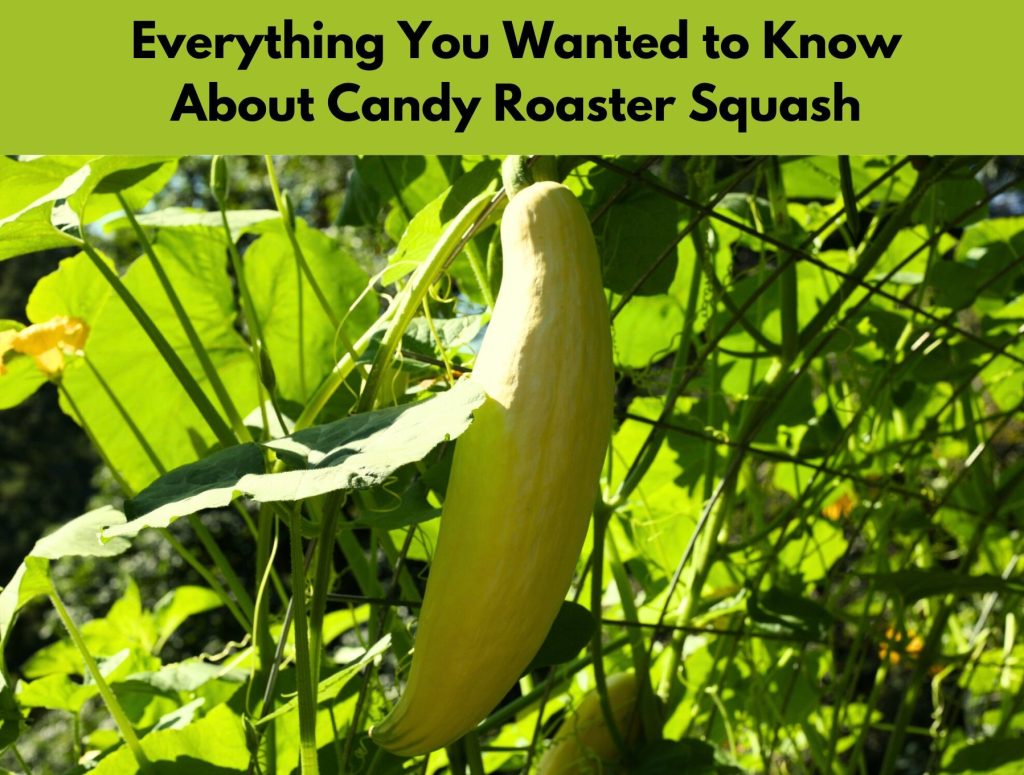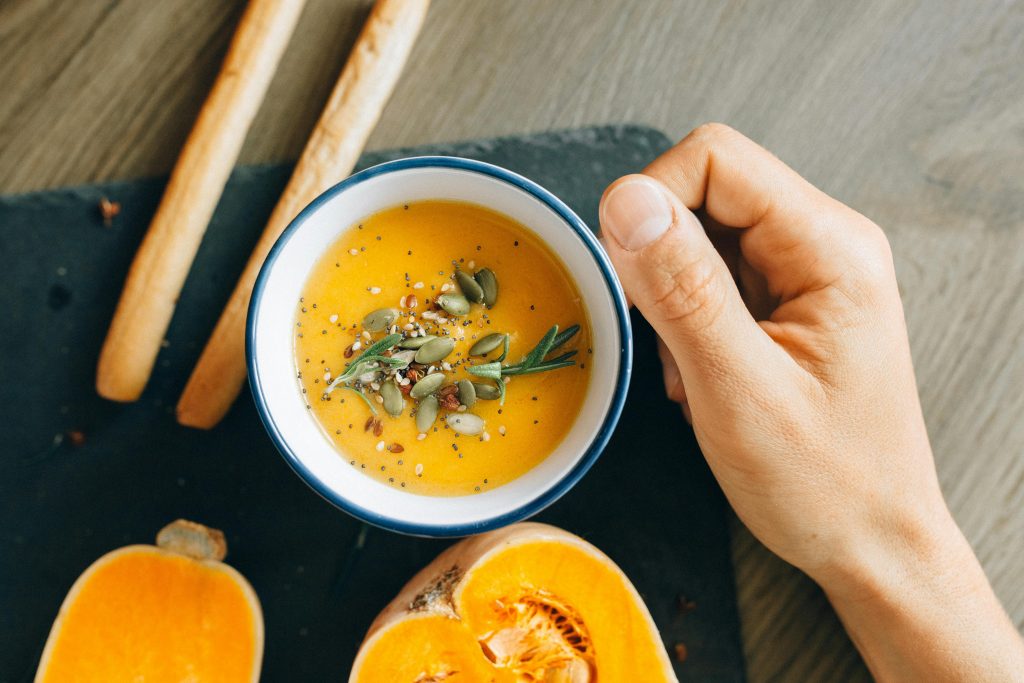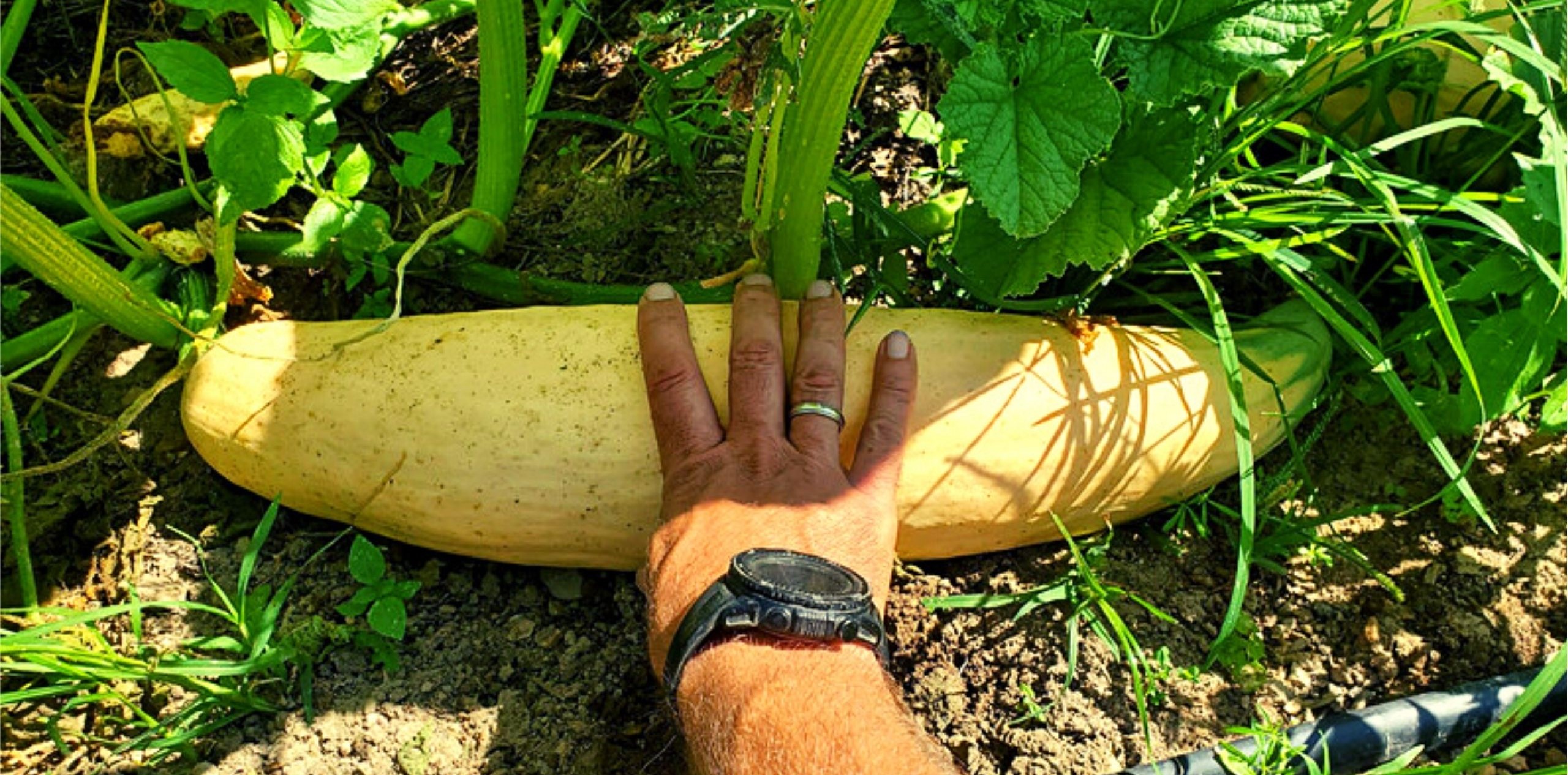Candy Roaster Squash, renowned for its sweet flavor and creamy texture, stands out as a distinctive winter squash variety. Its vibrant orange hue renders it an ideal addition to autumn-themed dishes or decorations. Originating from Central and South America, it journeyed to North America in the 1700s, garnering a rich historical background. Throughout this article, we delve into the unique flavor profile, health advantages, and versatile uses of this exceptional squash variety.

History and Origin
Candy Roaster Squash is native to Central and South America, where it has been cultivated for hundreds of years. Like many other squash species, its origin can be traced back to Native American agricultural methods. Native Americans farmed three main crops: beans, maize, and squash. This arrangement was called the “Three Sisters.” The Cherokee people were probably the ones who developed and cultivated the particular kind that would eventually be known as the Georgia Candy Roaster.
It is now regarded as an heirloom squash variety. This indicates that it is a cultivar that has mostly remained intact over the generations and is not commonly employed in large-scale commercial agriculture. Colonists introduced it to North America in the 1700s, bringing it with them from Europe. The squash quickly became a popular crop in many areas due to its sweetness and versatility.
Description of Candy Roaster Squash
The skin color of Candy Roaster Squash ranges from light pink to deep orange or even a bluish hue, depending on the specific variety. As the squash matures, its color tends to intensify. The flesh inside usually displays a vibrant orange color, signaling its richness in beta-carotene. It has a sweet, nutty flavor and creamy texture when cooked. The firm flesh lends itself well to various culinary applications such as soups, stews, pies, purees, or roasting as a side dish.
Flavor Profile of Candy Roaster Squash
Imagine biting into something that’s like the perfect mix of a sweet potato and butternut squash, but even sweeter. That’s your Candy Roaster Squash for you. It caramelizes beautifully, giving you this rich, deep sweetness that’s just so comforting. It has a sweet, nutty flavor that is slightly reminiscent of butternut squash. Its creamy texture makes it ideal for soups, stews, and pies.

You can also roast it for a more savory side dish or serve it raw in salads. Because of its delicious and versatile flavor, Candy Roaster Squash goes perfectly with a variety of ingredients. It adds a delightful touch to sweet dishes when paired with spices like cinnamon, nutmeg, and ginger. For savory recipes, it’s a great match with herbs such as sage, thyme, and rosemary.
Health Benefits
- Candy Roaster Squash is a good source of vitamin A, vitamin C, and fiber. These nutrients are essential for maintaining overall health and well-being.
- It is a great source of potassium, which reduces the risk of cardiovascular disease and hypertension.
- It is also low in calories, making it a great choice for those looking to manage their weight.
- It is also naturally low in fat and cholesterol, which makes it a healthy option for anyone watching their food intake. You will also find high amounts of beta-carotene in them.
Seasonality and Availability
As Candy Roaster Squash is a winter squash, it is usually picked in the fall and is readily available in the winter. In regions with mild climates, such as parts of the southern United States, it may be available slightly earlier in the season and may extend into early spring. It thrives in regions with a warm growing season followed by cooler harvesting conditions. The peak season for harvesting it is typically from September through December. It’s more commonly found in farmers’ markets and stores that specialize in local or heirloom produce, especially in regions near its traditional growing areas.
Cultivation
It is a warm-season crop, meaning it needs plenty of sunshine and temperatures between 65-80°F to thrive. It should be planted in an area with well-drained soil that has been amended with compost or other organic matter. Plant the seeds 1–2 inches deep, spacing them 3–4 feet apart in rows. To improve soil fertility and drainage, prepare the soil by adding organic matter, such as compost or well-rotted manure. Candy Roaster Squash grows best in soil that is between 6.0 and 7.0 pH, which is somewhat acidic. To ensure that the squash reaches its maximum size, you will need to provide support for the vines as they grow.
Harvesting

It should be harvested as soon as possible after the first frost to avoid damaging the fruits and reducing their quality. When it reaches its full size and color and its skin has formed a firm rind, which is usually 6 to 8 weeks after planting, you can harvest it at any time. A fully grown squash will have a brown, dry stem that can be readily pulled off the vine by twisting it gently or cutting it with pruners. When harvesting, ensure to cut the stem at least one inch away from the body of the squash. Confirming that the stems and skin are firm and dry is crucial, as soft or wet stems indicate that the squash is immature and not yet ready for harvesting.
Where Does Candy Roaster Squash Grow?
You can grow it in a variety of climates across the United States and Canada. Candy Roaster Squash grows well in areas with hot summers and extended growing seasons. It requires a lot of sunlight, from 6 to 8 hours every day. It also needs soil that drains properly and has a pH between 6.0 and 7.0 to flourish and yield large amounts. In colder climates, it is preferable to grow it in greenhouses or high tunnels where temperatures can be maintained at optimal levels.
What Are The Things to Remember When Buying Candy Roaster Squash?
When buying Candy Roaster Squash, look for fruits that are firm and heavy for their size. The rind should be dry and free of blemishes or soft spots. Choose medium-to-large-sized squash because smaller ones could not have fully developed flavors and textures. On the other hand, avoid really large squashes because they could be overripe and have a fibrous texture. Avoid any squash with cracked, bruised, or decayed skin, as these indications suggest that the squash is past its prime or has been stored improperly.
How to Store Candy Roaster Squash?
The ideal storage temperature is around 50-55°F (10-13°C). You can store it in a cool, dry area for up to a month. Place the squashes in a single layer, preferably not touching each other. Stacking or overcrowding can lead to quicker spoilage. Periodically inspect the squashes for any signs of spoilage, like soft spots or mold. Remove any affected squash to prevent the spread of decay.
Once cut, wrap the flesh in plastic and store it in the refrigerator for up to five days. You can also freeze the squash for longer storage. To do this, cut the squash into cubes or slices and blanch for three minutes before freezing on a baking sheet. Once frozen, store in an airtight bag or container until ready to use.
If you want to can the squash, use a pressure canner, as the boiling water method is not safe for low-acid vegetables like squash. Do not mash or puree the squash as it can affect heat penetration during processing.
How Do You Use Candy Roaster Squash With Other Fruits and Vegetables?
Candy Roaster Squash is a versatile ingredient suitable for use in a variety of dishes. Its mild, sweet flavor pairs well with many other fruits and vegetables. It can be roasted, mashed, or pureed for soups and stews. Cut the squash into slices or cubes, toss with olive oil, salt, and your choice of herbs or spices, and roast in the oven. This method caramelizes the squash, enhancing its natural sweetness. It also adds flavor to salads, stir-fries, and casseroles. You can also use it as a substitute for other winter squash, such as butternut or acorn squash, in recipes.
Conclusion
Candy Roaster Squash is an easy-to-grow variety of winter squash with many health benefits. Its sweet flavor makes it great for both savory and sweet dishes. You can store it for up to a month in a cool, dry area and freeze it for longer storage.
With its versatility, it’s sure to be a favorite ingredient in your kitchen!
- Dino Melons: Description, Flavor, Benefits, And Uses - April 29, 2025
- Pear Trees: Planting, Growing, and Harvesting Pears - March 27, 2024
- Runner Beans (Scarlet Runner Bean): Description, Flavor, Benefits, And Uses - March 21, 2024
